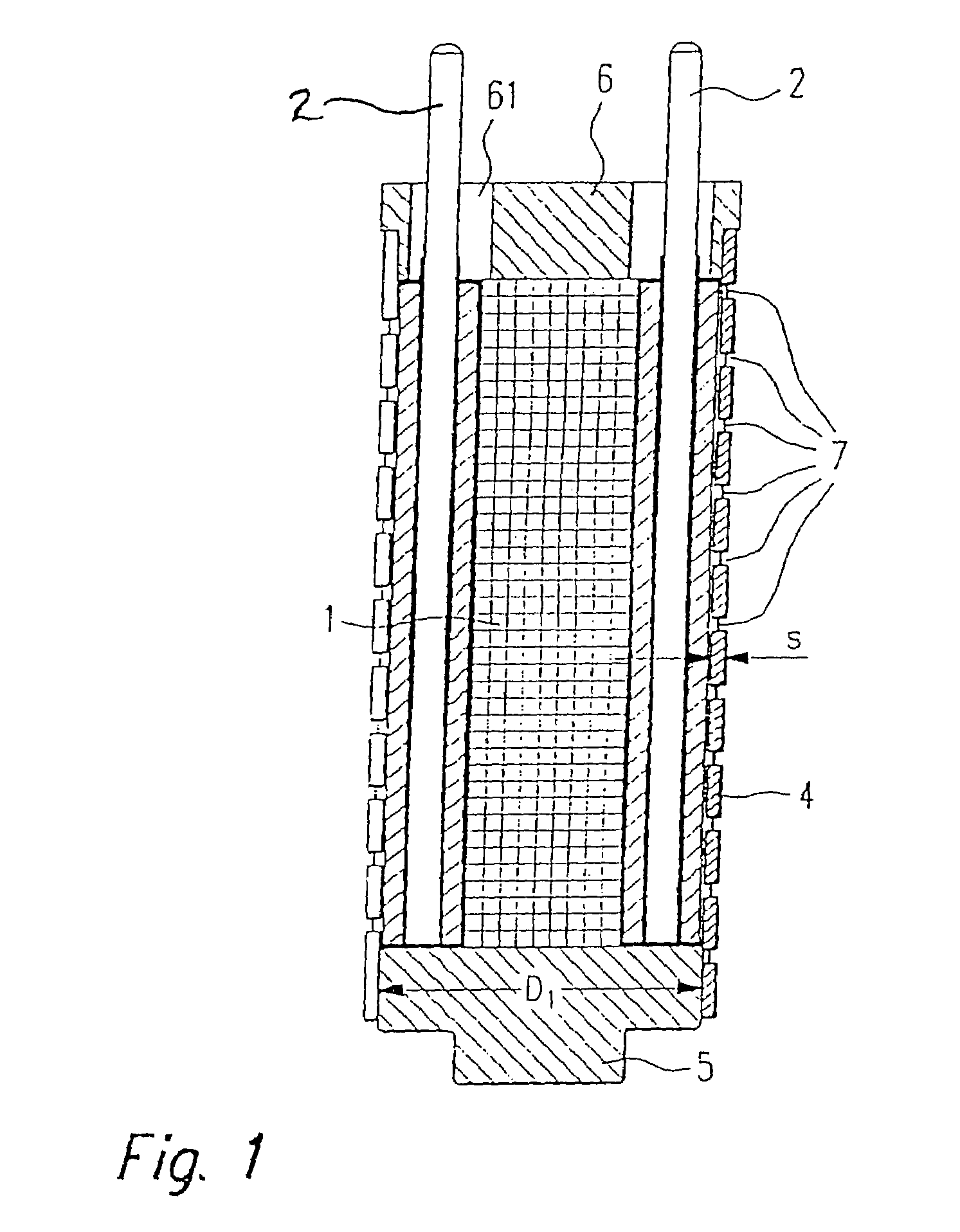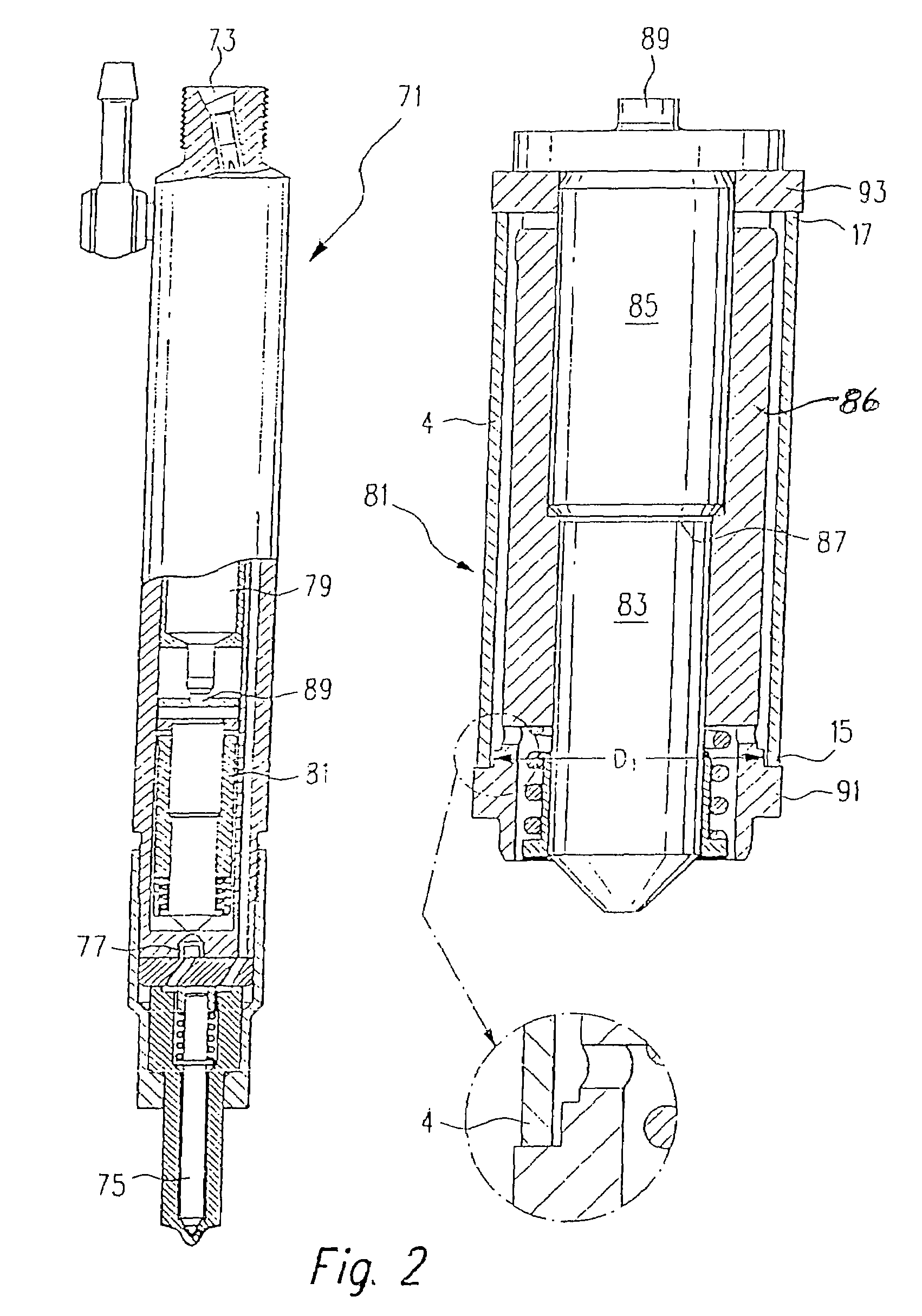Actuator unit for a piezo-controlled fuel injection valve
a piezoelectric actuator and fuel injection valve technology, applied in fuel injecting pumps, generators/motors, machines/engines, etc., can solve the problems of valve-closure members lifting away, actuators contracting, valve expansion, etc., to prolong the service life of actuator units, reduce spring rigidity of the hollow body, and strengthen the hollow body
- Summary
- Abstract
- Description
- Claims
- Application Information
AI Technical Summary
Benefits of technology
Problems solved by technology
Method used
Image
Examples
Embodiment Construction
[0055]FIG. 1 shows a first exemplary embodiment of an actuator unit according to the present invention. The actuator unit is comprised of a piezoelectric actuator 1, which can be comprised of a number of stacked individual piezoelectric elements (not shown). The piezoelectric actuator 1 is triggered via contacting pins 2 that are disposed alongside the actuator 1 and are connected to the actuator 1 in an electrically conductive fashion. The application of a voltage between the contact pins 2 produces a longitudinal expansion of the piezoelectric actuator 1, which is used, for example, to control an injection valve in an internal combustion engine. The piezoelectric actuator 1 with the contact pins 2 is disposed inside a hollow body 4 embodied in the shape of a tubular spring. The ends of the piezoelectric actuator 1 each rest against a respective cover plate 5, 6, the upper cover plate 6 being provided with feedthroughs 61 through which the contact pins 2 extend. The upper and lower...
PUM
 Login to View More
Login to View More Abstract
Description
Claims
Application Information
 Login to View More
Login to View More - R&D
- Intellectual Property
- Life Sciences
- Materials
- Tech Scout
- Unparalleled Data Quality
- Higher Quality Content
- 60% Fewer Hallucinations
Browse by: Latest US Patents, China's latest patents, Technical Efficacy Thesaurus, Application Domain, Technology Topic, Popular Technical Reports.
© 2025 PatSnap. All rights reserved.Legal|Privacy policy|Modern Slavery Act Transparency Statement|Sitemap|About US| Contact US: help@patsnap.com



